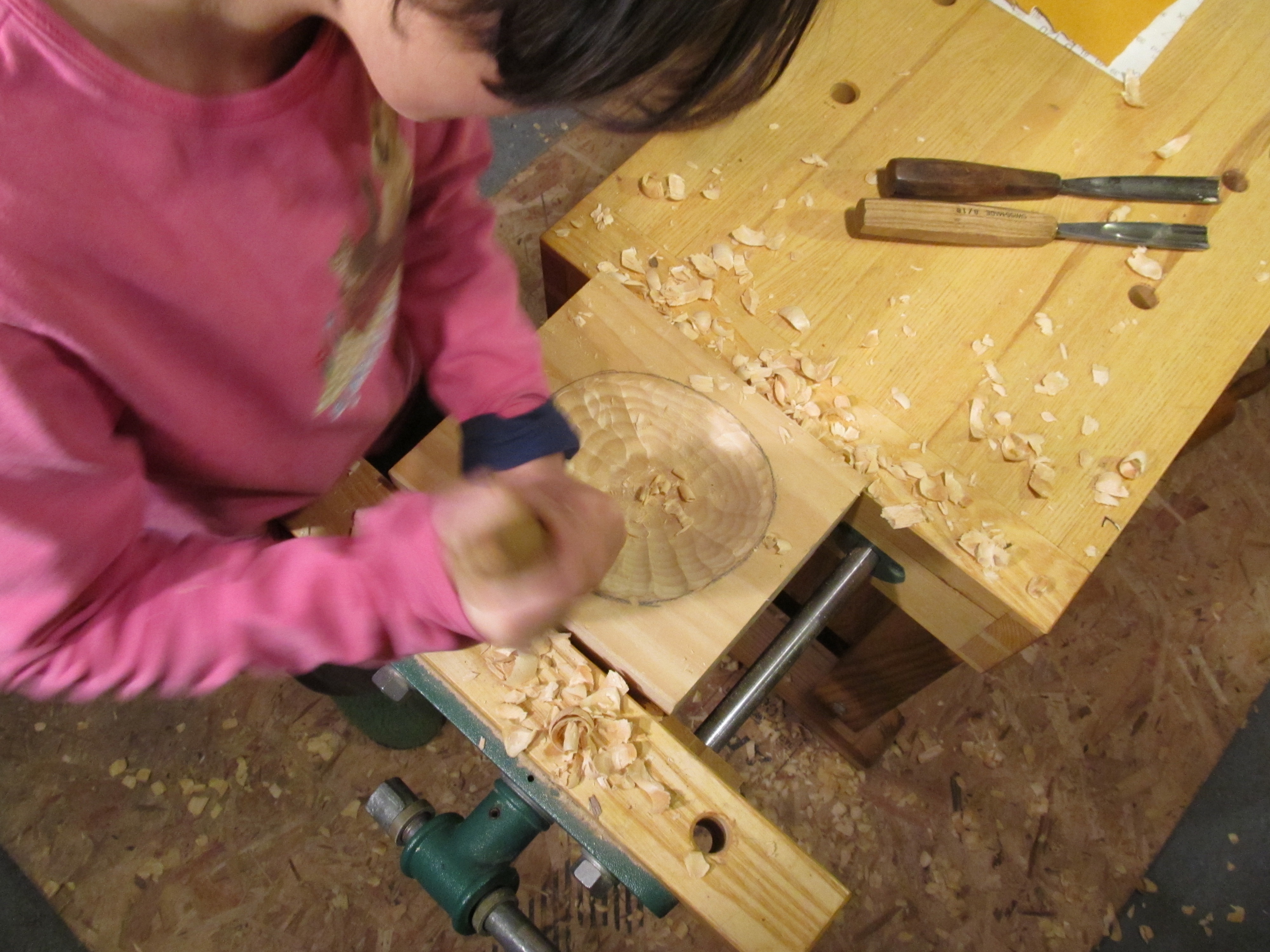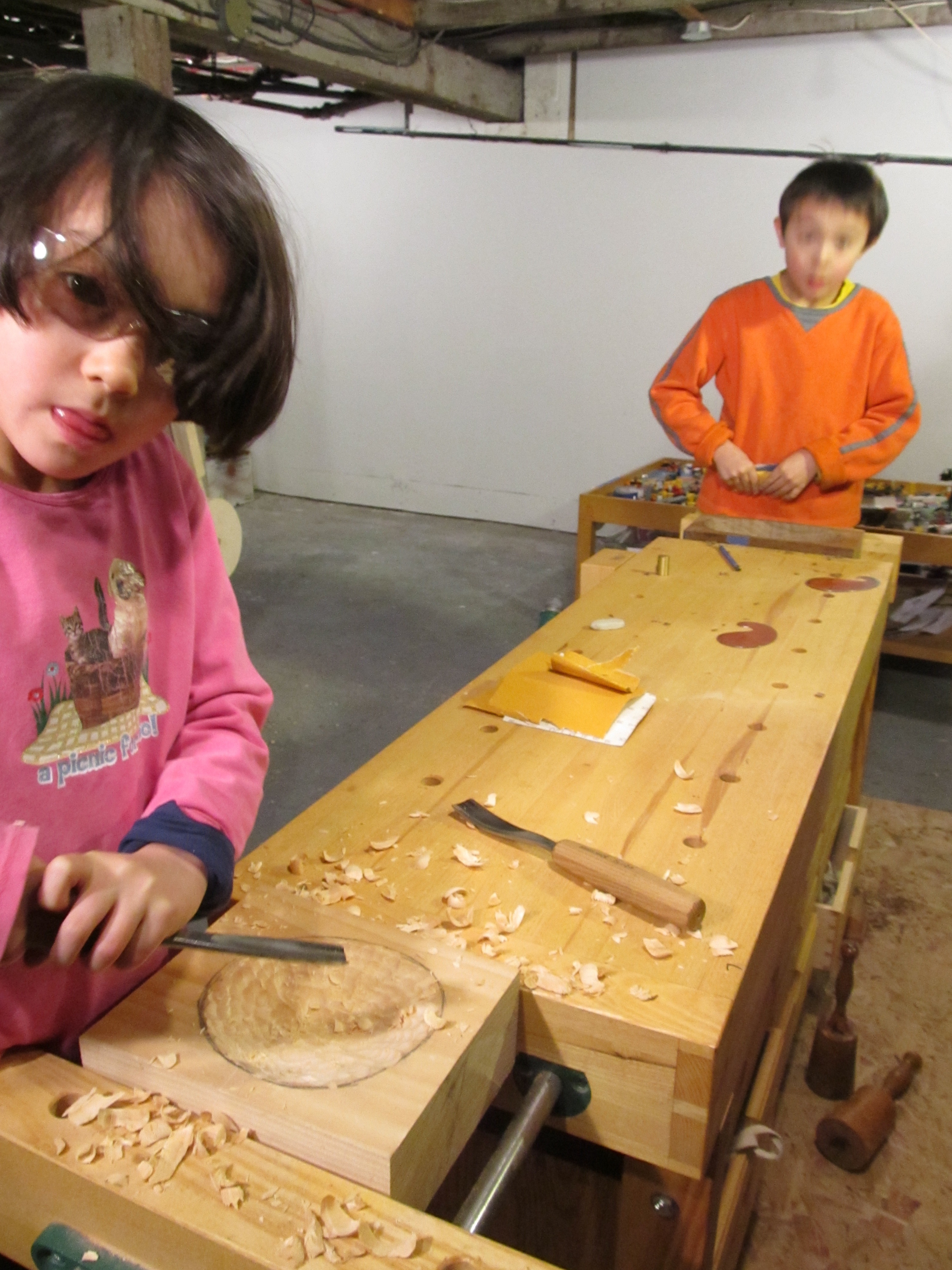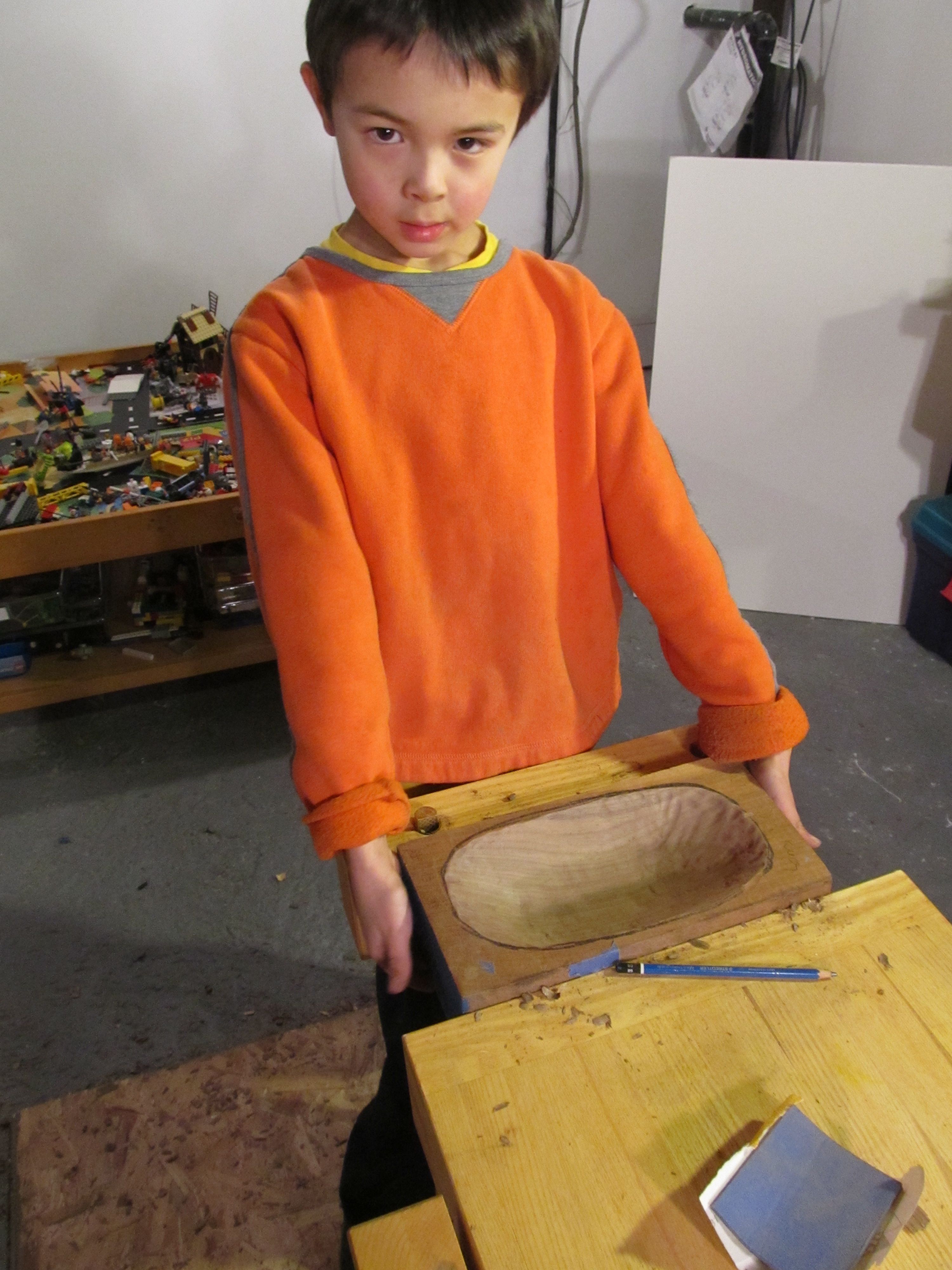Teaching carving is fun because it is intuitive and full of surprises. The rules are simple and easy to follow, and everyone usually leaves with a bowl of their own design and style. It requires only a gouge or chisel, a mallet and some stable way to hold the work. There is a simplicity, a rhythm and a pace that I find in carving wood that is unlike most other woodworking practices. It i precise but a precision, not like that of accurately crafted dovetail joints, it is about the mark and the cut. Similar to drawing or handwriting, each person carving wood has their own mark, their own unique way to create a line or render a shape. You can hear each person work from across the room, the sound of how their chisel impacts and slices the wood reveals one’s style through a mark. The precision is seen with the eye and felt with the hand.

I learned


Two hands on the chisel

Hard at work
Before his iPod (his little machine) took over my son’s mind, he carved several other bowls in walnut, cherry and butternut. Generally, he is a speed demon, doing everything fast, but when he carves wood, he slows down. He does not seem to mind cutting away the high spots. The ‘high spots’ are the bumps you feel when you run your hand over the form of the bowl. A well-shaped bowl has a fair surface that reads as smooth to the hand as it does to the eye. When I see him laying down a pattern of consistent, organized cut ‘marks,” sanding to perfection or even re-doing something that he could see or feel, is my delight. I am ecstatic when he puts down his ‘little machine” long enough to, feel his work, touch the contours and edit the imperfections in his own work.

Roughed in

Hand Scraping

